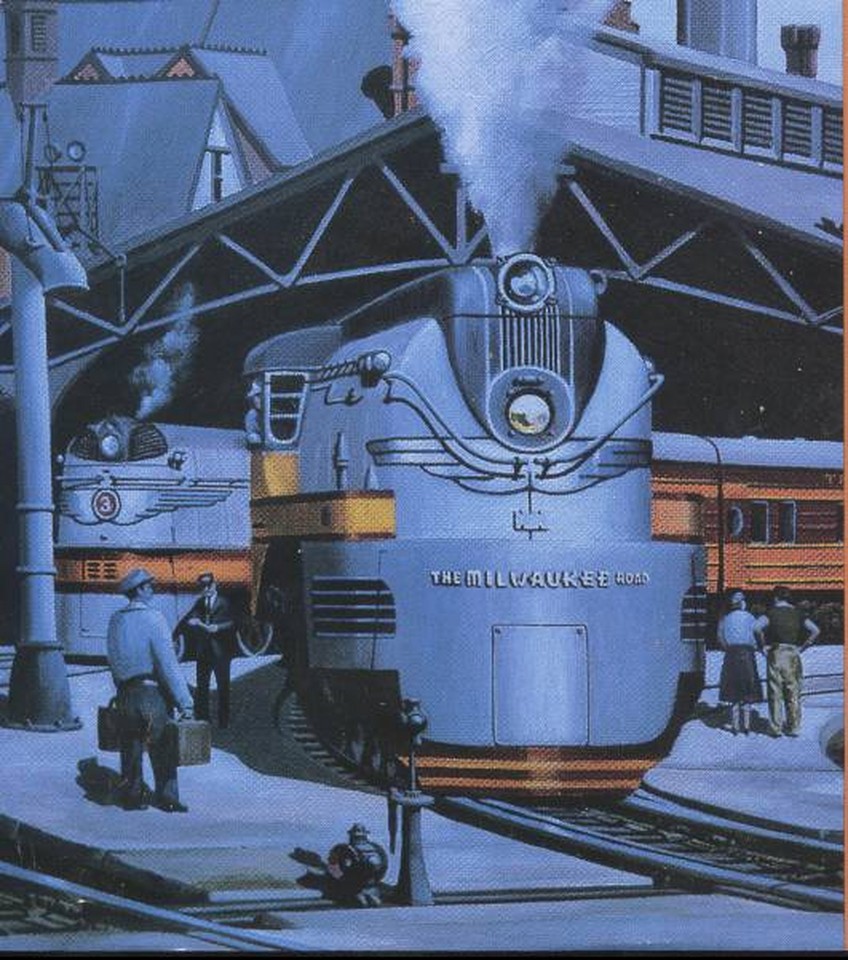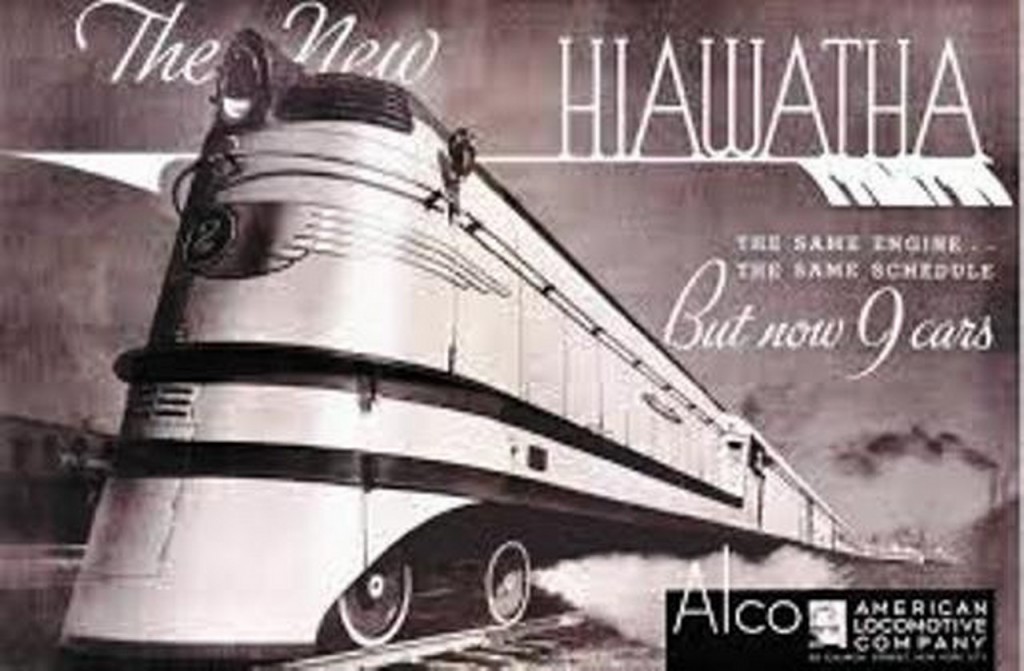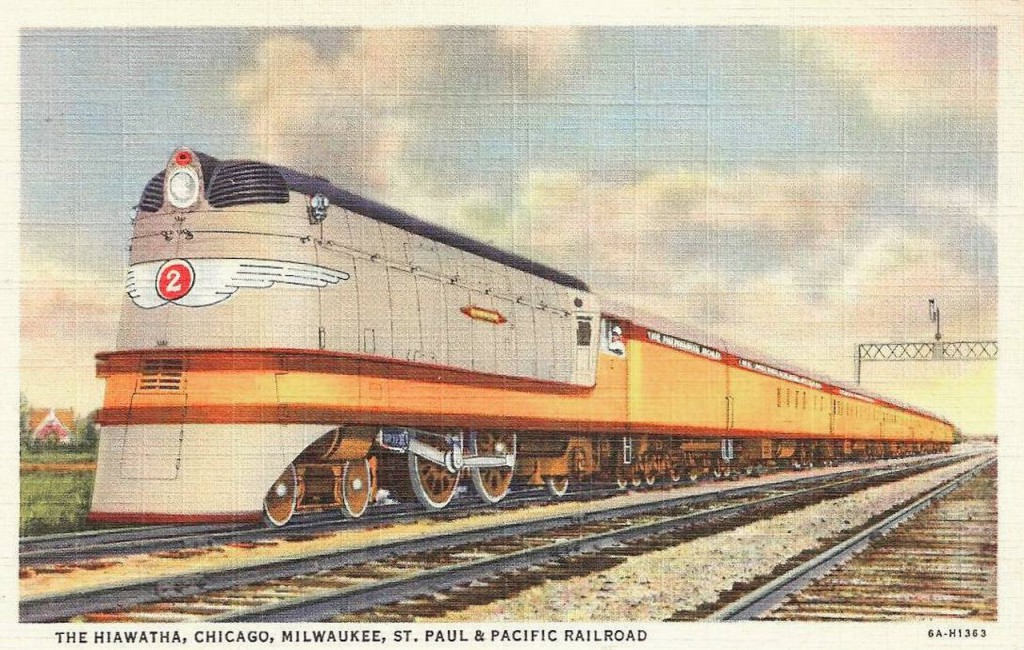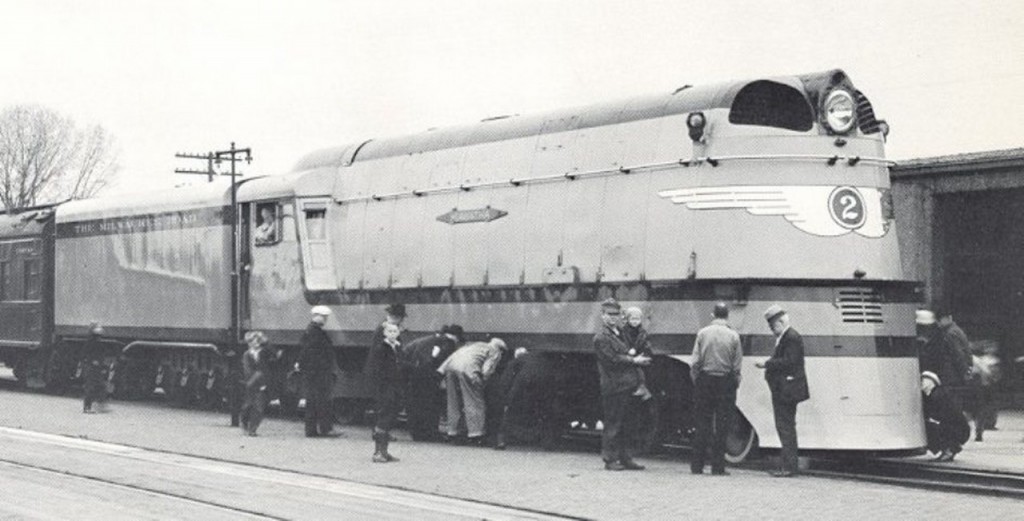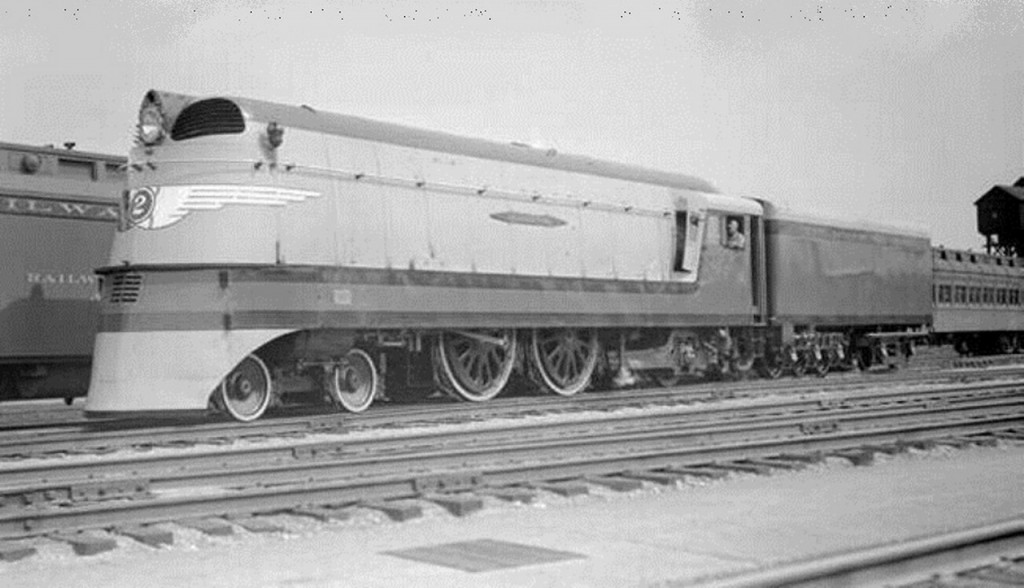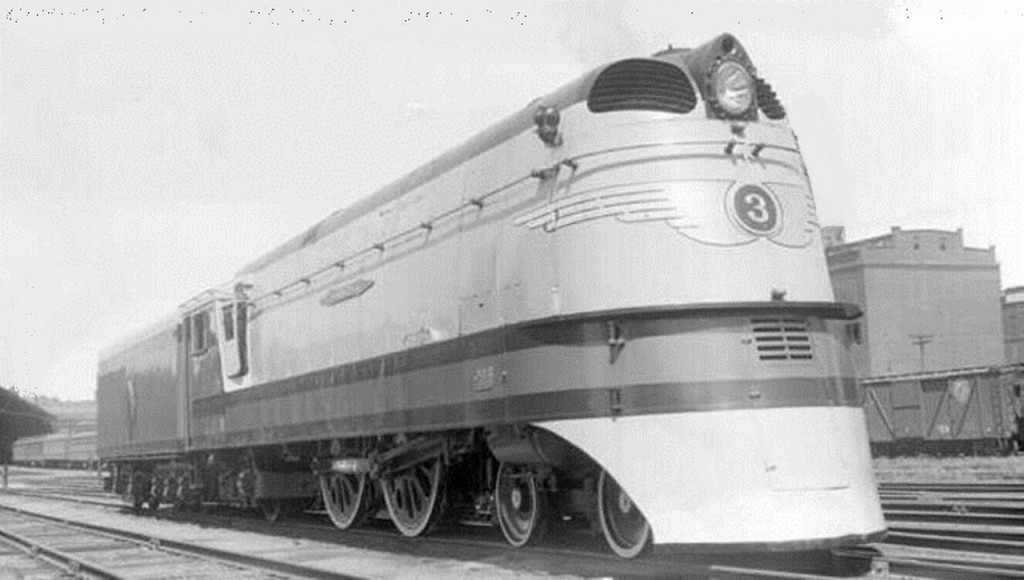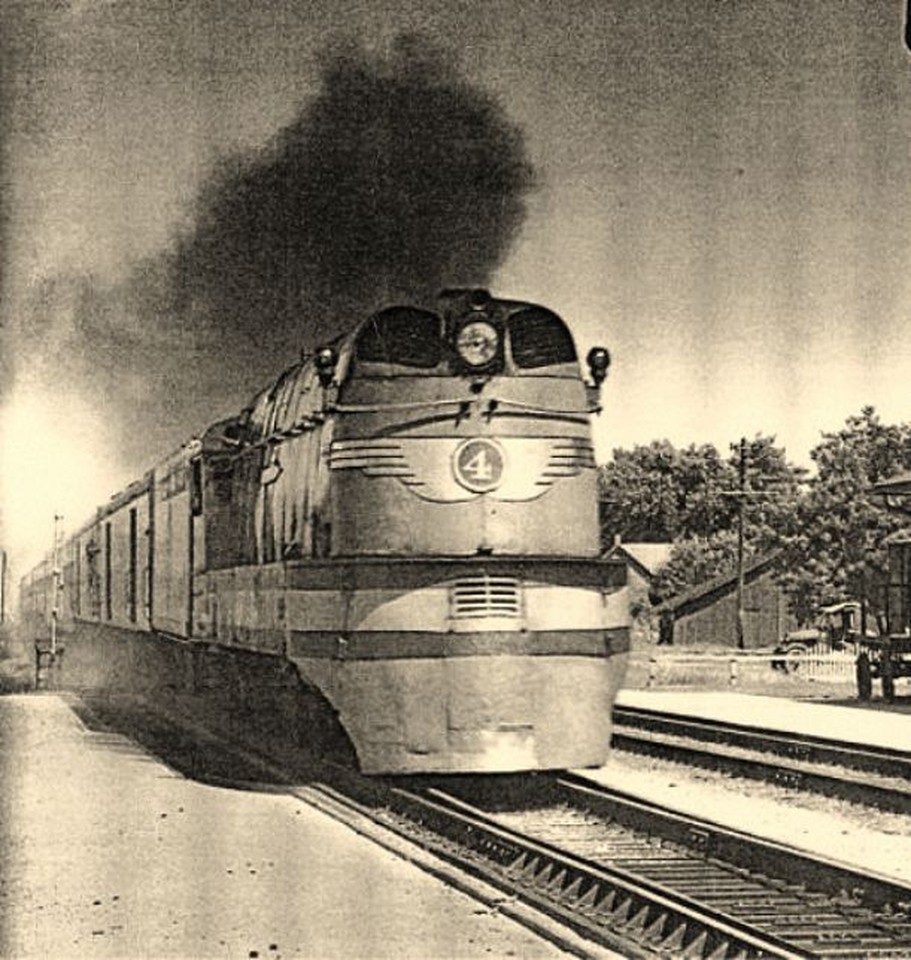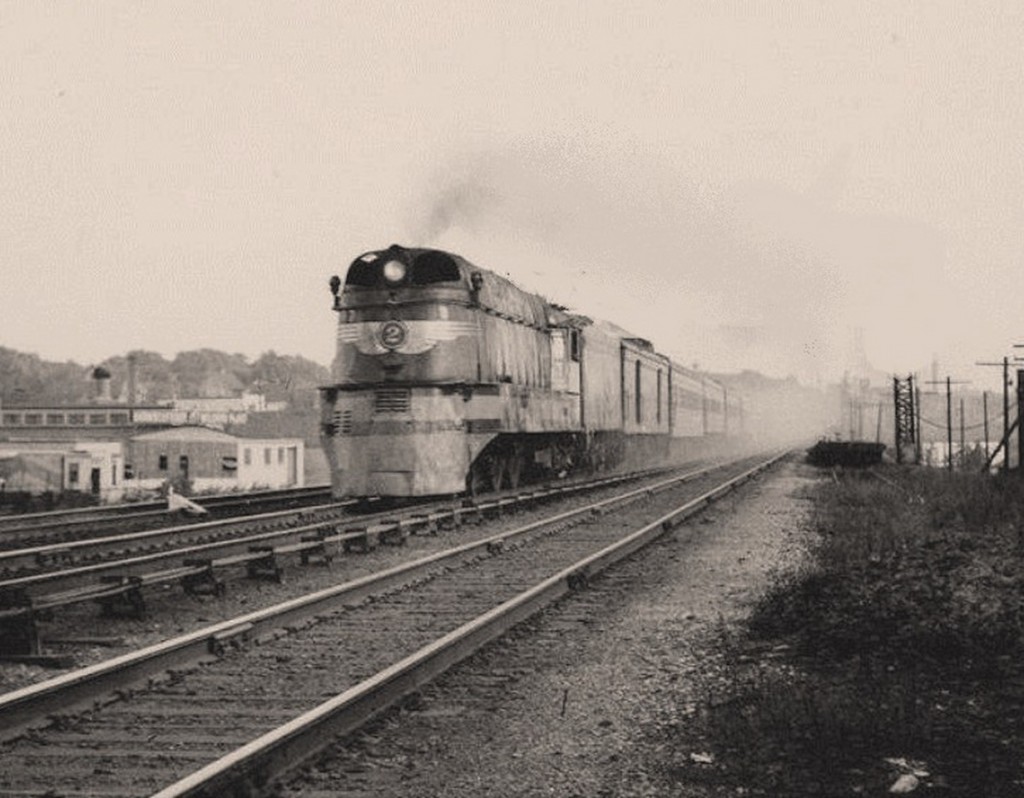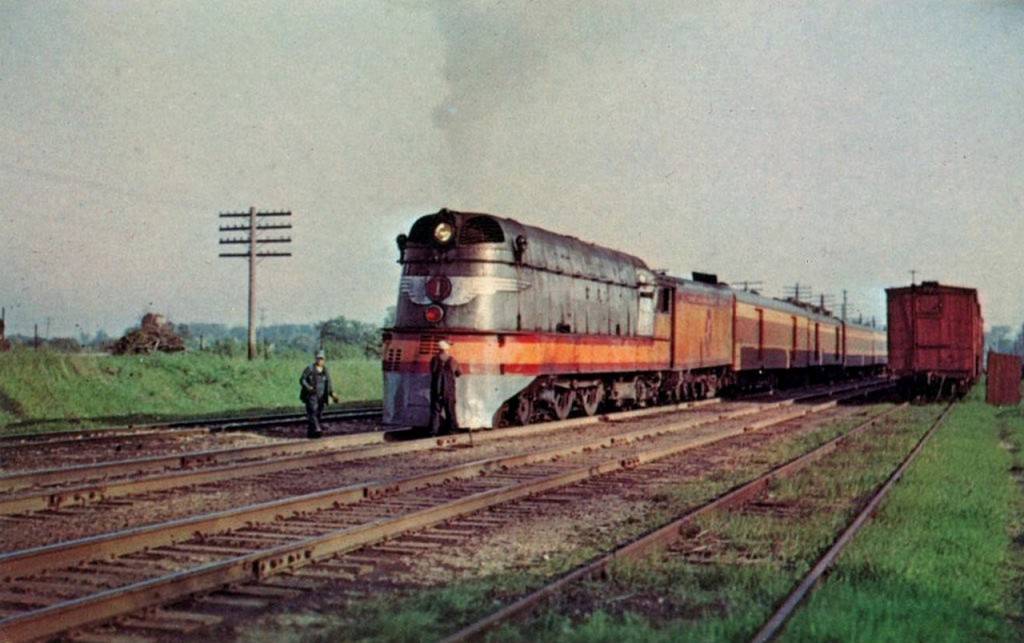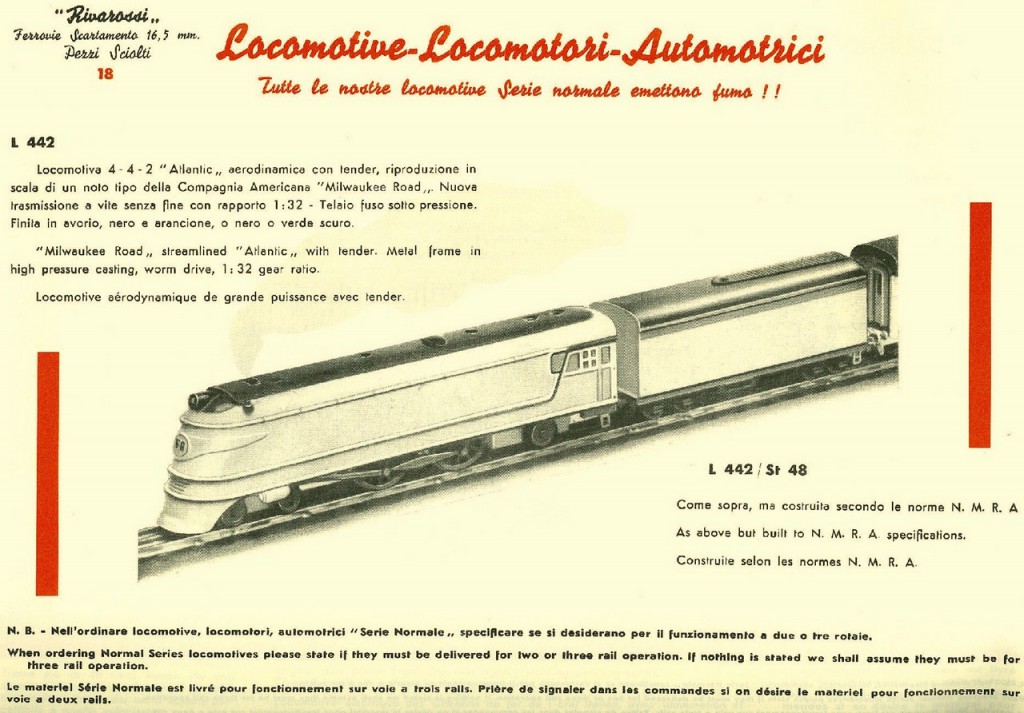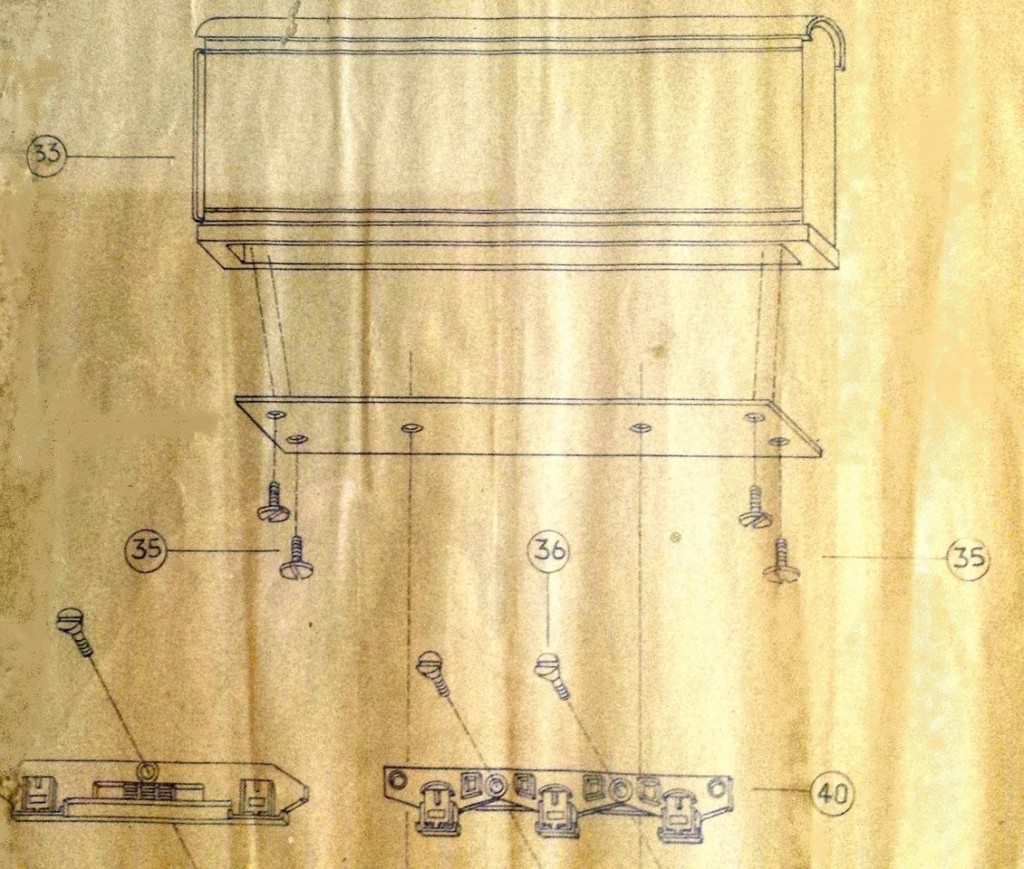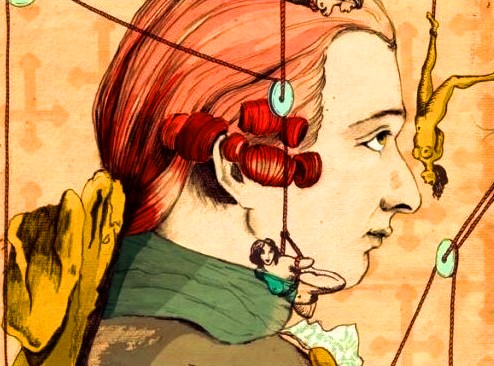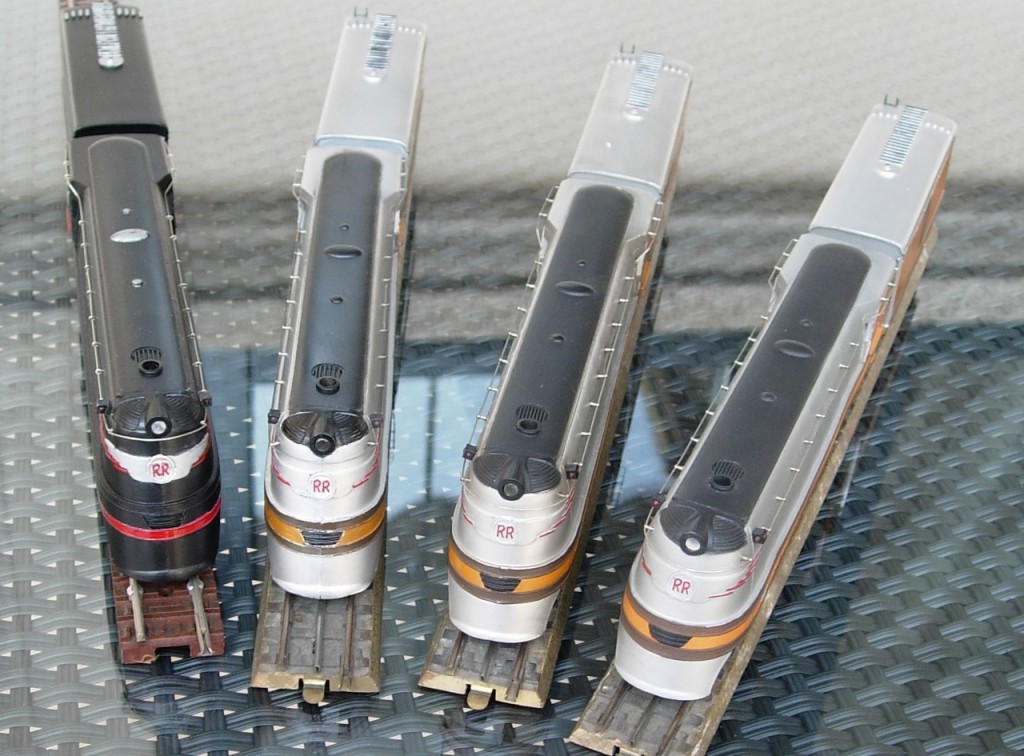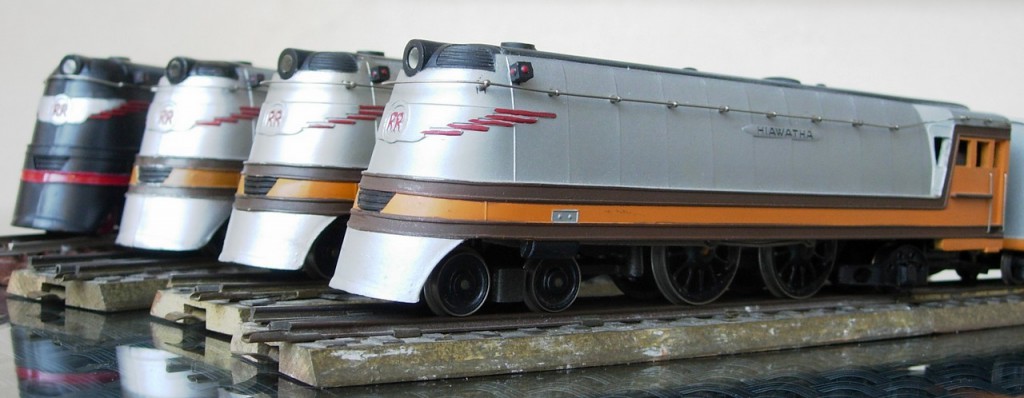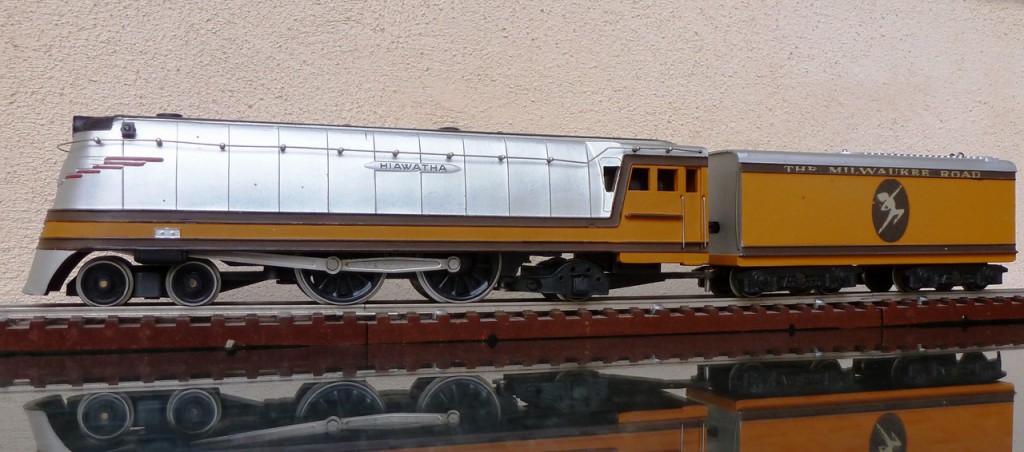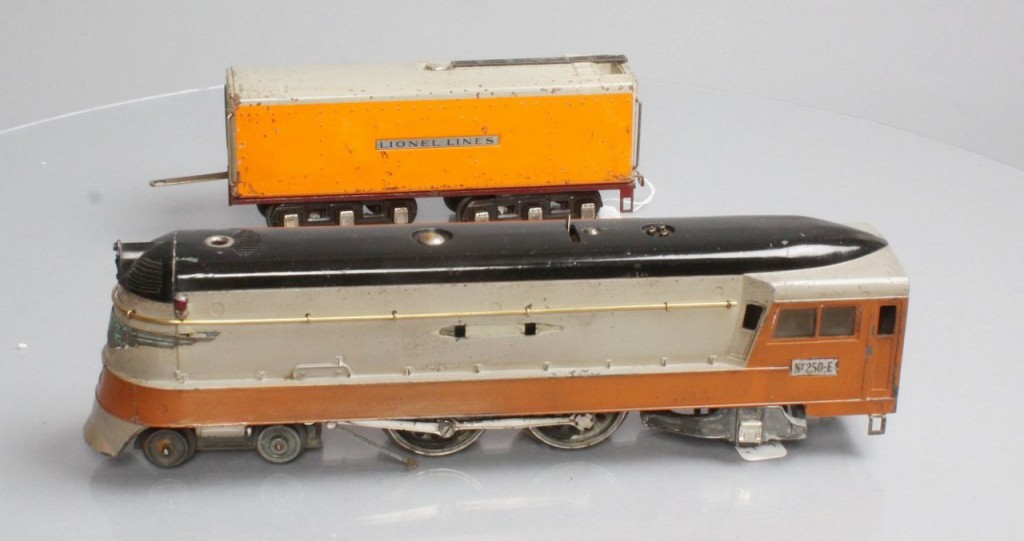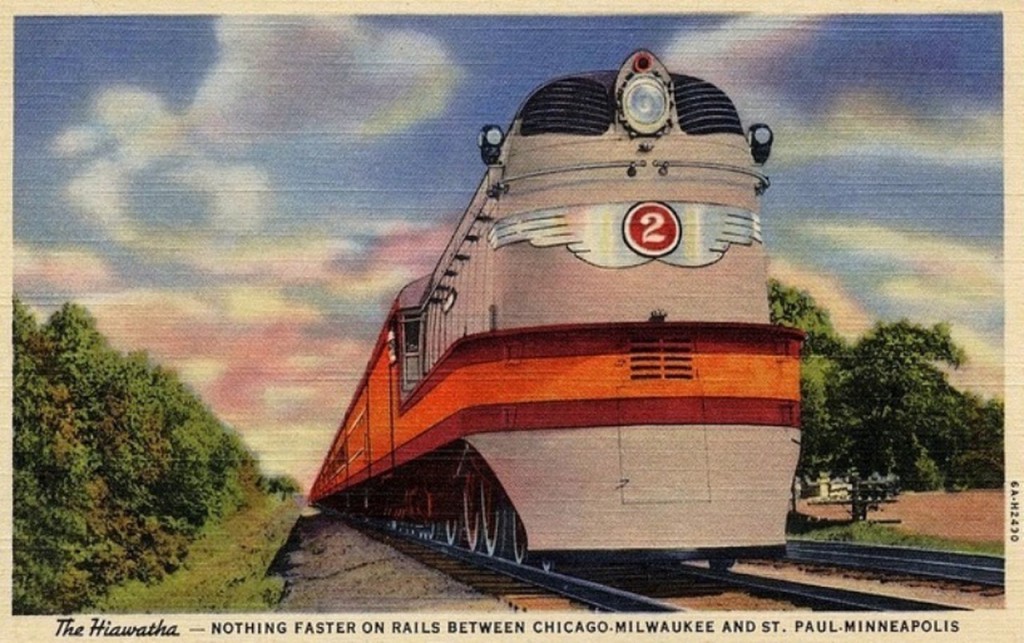Rivarossi Hiawatha (first part)
(Written by P.G.)
One of my favourite model locomotives, perhaps because, when I was a child, I wanted it so much , is the Rivarossi Hiawatha.
The Legendary the Milwaukee Road “Atlantic Class A”, the real locomotives corresponding to the Como company’s model, were built by Alco…
… in four units between 1935 and 1937 to haul express trains between Chicago and Milwaukee.
The locomotive with the tender was 244 tons heavy …..
….they were 27 metres long ….
…. The driving wheels had a diameter of 2.13 metres …..
…they had nice streamline body ….
…and could haul a six carriages train
with 160 km/h average speed ….
….reaching a maximum of more than 180 km/h.
These engines were withdrawn from service between 1949 and 1951, to be replaced by the more powerful “ Hudson F7 “, and were scrapped in 1953 .
The Class A #1 photographed here in 1950 is in a poor extrernal condition
The Rivarossi model appeared for the first time, with the image of a prototype, in the company’s 1948 catalogue…
… the first models were delivered for Christmas 1948
and the company’s 1950 catalogue shows the final shape though still without emblem on the tender
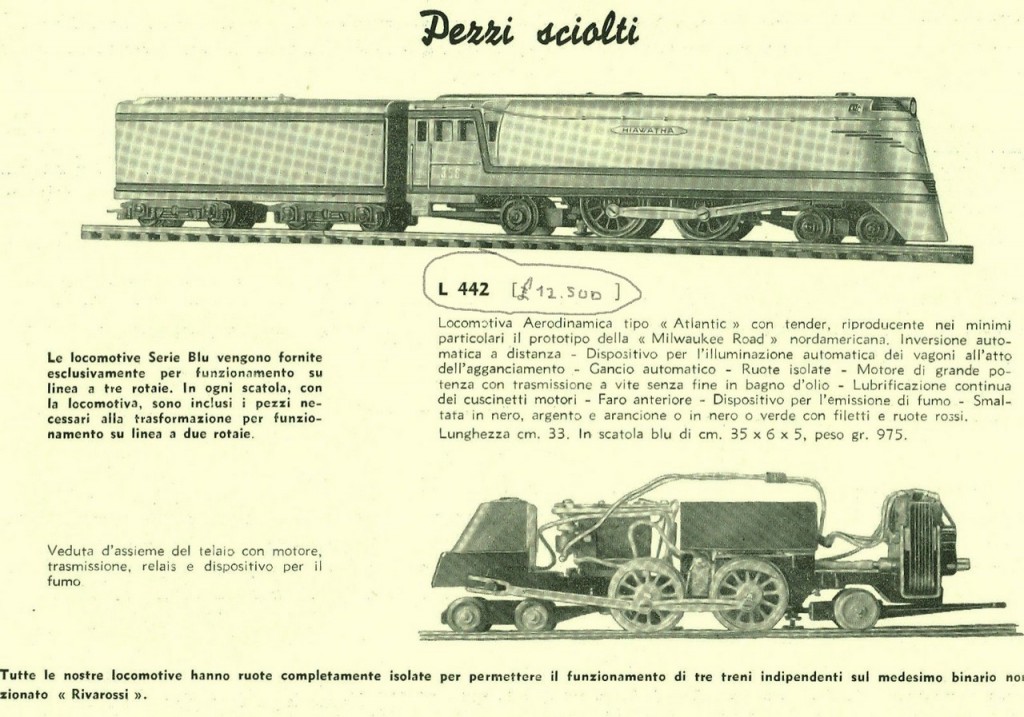
It should be noted that Rivarossi, at project level, had originally intended to equip their tender with a front three-axles bogie, like in the real locomotive, as we can see from the initial assembly instructions for the model kits …
…… corrected immediately afterwards.
Almost certainly for economic reasons, the tender was equipped with the bogies used for the Italian FS passenger carriages who equipped also the FNM (North Milan Railways) electric railcars of the same period.

In comparison, the brass-model shown in this picture is much more faithful to the real locomotive; this model was built by KMT for Fulgurex in 1964.

The first model locomotives were proposed in 1948-1949 also for the ST48 series also, and later for the Blue Series for three AC tracks until 1955, and subsequently only for two DC tracks up until 1959.
This model was also sold as assembly kit, in the “SM” series. This abbreviation simply stands for “Scatola di Montaggio “(Assembly kit), although a friend of mine who assembled the kit interpreted the abbreviation “SM” differently, given the difficulty of mounting the transmission system with ball bearings and given the filing work necessary in order to insert the axels in their chassis and ensure that the run smoothly, jokingly referring to a certain” Sadism” on the part of the manufacturer and to a certain “Masochism” on the part of the purchaser.
In fact, in exchange for a 13% price reduction in comparison with the finished model, the purchaser was required to demonstrate significant knowledge and to overcome a lot of obstacles with many hours of work to obtain only a simplified version of the locomotive, unpainted and without lightning …..
The upper shell was composed of a single molded part, without any particular assembly problems.
The only parts requiring to be assembled were the handrails, the two small lamps on the upper part of the fairing and the ladder on the back of the tender. The assembly of this locomotive did not require the use of glue.
However, in my opinion, the Rivarossi Hiawatha are even more beautiful than the real locomotives themselves : a lower roof prominence …..
….. the more sloping front….
…. the shorter tender ….
…. give to the model a more streamlined and elegant look…..
These are also certainly more beautiful than the “O” scale Hiawatha produced by Lionel, a little too short and less slender …..
( continued in the second part by clicking the above image)
(@ March 15, 2016)
